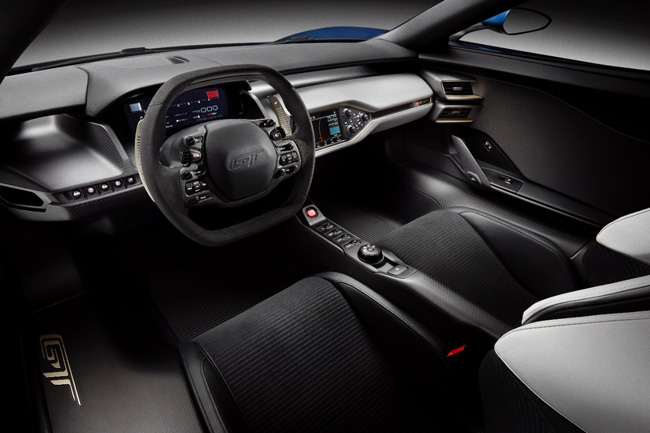
Remember back in November, when we forecasted the future of carbon fiber? At the time, thanks to the hundred-million dollar backing from over 70 different companies, a German run research entity called MAI was taking it upon themselves to reduce the production costs of carbon fiber by as much as 90 percent. (If you don’t remember, or weren’t yet with us, here’s your review.)
Well now, America’s own Ford is looking to put the pedal to the metal and accelerate their own research, with sights set on developing all new manufacturing techniques that will drive prices down and volume up.

They’ll be working with DowAksa, which is a 50/50 joint venture between The Dow Chemical Company — a carbon fiber-themed friendship that Ford initially forged back in 2012 — and Aksa Akrilik Kimya Sanayii A.Ş., a Turkish company that specializes in carbon fiber manufacturing.
Together they’ll be a part of the newly installed Institute for Advanced Composites Manufacturing Innovation, an organization brought to life by the U.S. Government, and one that’s part and parcel of the U.S. Department of Energy’s National Network for Manufacturing Innovation.
“Our collaboration with DowAksa and participation in this organization significantly boosts what we are able to achieve,†said Ken Washington, Ford vice president, Research and Advanced Engineering, via a press release. “We have a true alliance of highly talented people working to take automotive materials to the next level.â€
Ford and their friends are hoping to recreate some of the magic made when Ford implemented aluminum, high-strength steel and other such materials — including carbon fiber — into their 2013 Fusions. The move reduced the car’s weight by 25 percent, increased its overall fuel efficiency and cut down on greenhouse gas emissions.

The 2013 Fusion and the 2015 F-150 — whose weight was reduced by 700 pounds using similar techniques — are prime examples of Ford’s current featherweight philosophy, termed light-weighting, and a major part of their “Blueprint for Sustainability.â€
“Consumers today want better fuel efficiency, but they also want more technology and features in the car, which usually adds weight to the vehicle,†said Raj Nair, Ford group vice president, Global Product Development, via a separate press release. “A focus on light-weighting will be fundamental to our industry for years to come, and we are investigating many advanced materials applications as possible solutions for weight reduction in our vehicles.â€
Ford’s affiliation with DowAksa is an integral part of that investigation. And carbon fiber is at the core of it.
Just take a look at Ford’s all-new GT supercar, which boasts “outstanding acceleration and handling†and “improved efficiency†with much thanks paid to carbon fiber.


“With the broad application of structural carbon fiber elements, the GT will exhibit one of the best power-to-weight ratios of any production car.â€
Sure, Ford’s new supercar is super sweet, but the question remains. Will this new commitment to weight-reduced materials culminate in a carbon fiber cost-cutting revolution?
Possibly, though Ford nor DowAksa have outlined their efforts to create such a thing. (The release is filled with purpose and promise but little-to-no details on production or execution.)
What with the world now craving lighter, more fuel efficient automobiles, ones as strong, if not stronger, than their predominantly steel-constructed compadres, it seems like Ford, and others, don’t have much of a choice.
Carbon fiber is the future of automobile manufacturing. And it looks like Ford is shifting gears and making for the fast lane.
If the GT supercar is any indication of where they want to go with their efforts, let’s hope they arrive sooner rather than later.

[Source: Ford, Car and Driver (photos) ]